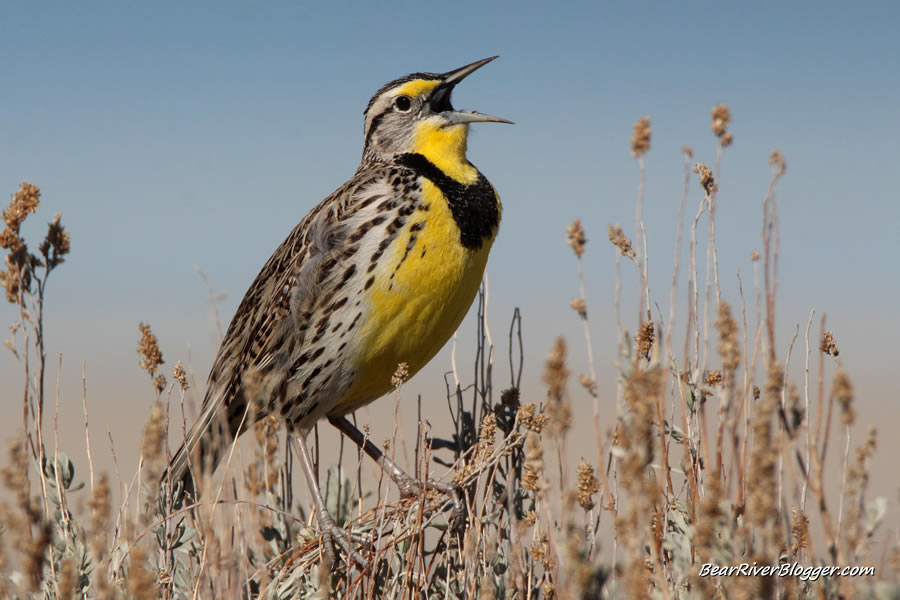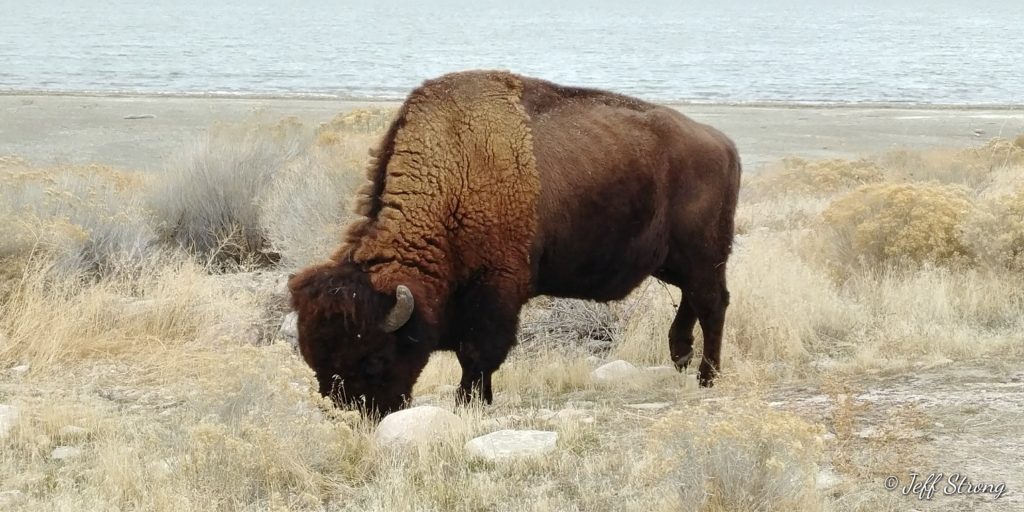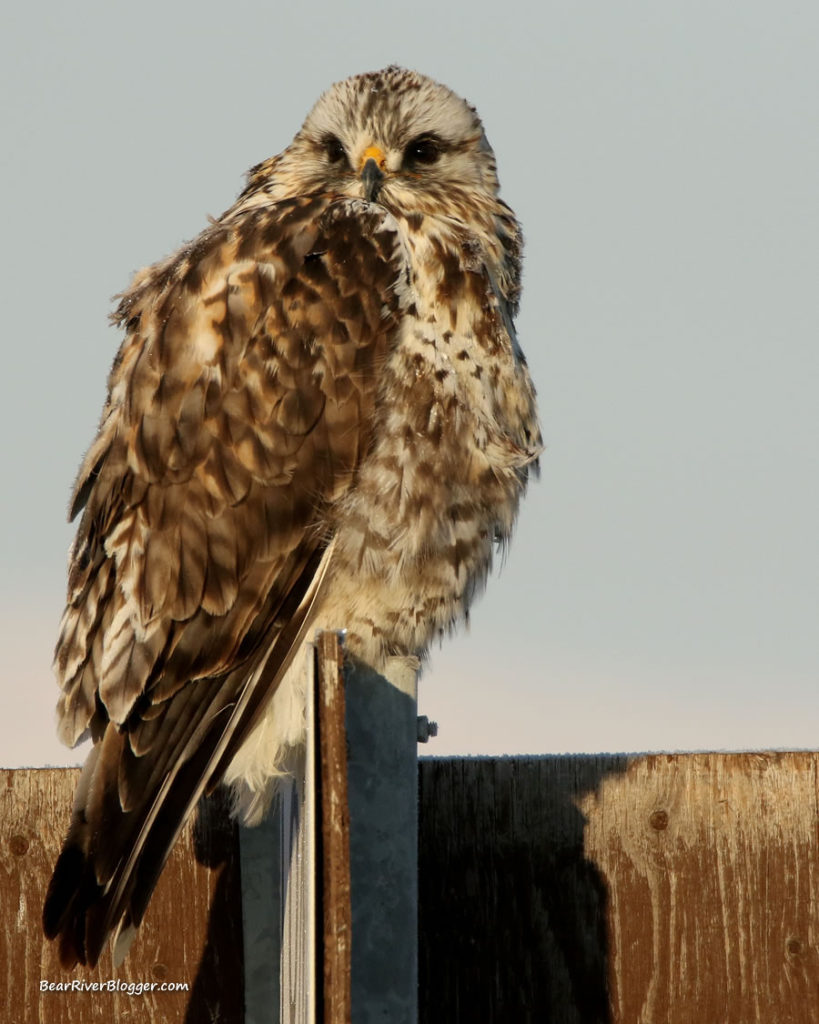When it comes to the soothing sounds of nature, and trust me there are indeed plenty to choose from, nothing beats the melodic overture of a western meadowlark singing on a warm spring day.
In fact, I’ll give you a full confession here showing to what degree I love the sights and sounds of a singing western meadowlark.
Yesterday was just one of those days where the weather was too much of a temptress, doing everything it could to seduce me into casting all else aside, both work and play mind you, and grab one of my cameras, jump in the car, and just go somewhere to do absolutely nothing at all but sit and, well, you might have guessed it, listen to western meadowlarks sing for a bit.
So, as a result of the growing temptation initiated by the perfectly clear blue sky, something seldom seen in my neck of the woods these past few months, that is exactly what my elderly mother and I did on Antelope Island yesterday morning for a couple of hours or more.
And quite honestly, I’d do it all over again, and most likely will on the next sunny day that comes along with not a single regret despite having to stay up until 2:00 am last night editing the resulting video and images for this blog post.
(Singing western meadowlark on Antelope Island State Park.
Don’t forget to subscribe to our Bear River Blogger YouTube channel for short nature clips such as this as well as periodic updates about the Bear River Migratory Bird Refuge.)
In my defense, however, yesterday was just too nice a day to be indoors staring at a computer screen when I could be outdoors taking in the sunshine and warmer temperature while standing behind a camera photographing the western meadowlark as it sings its springtime song.
As I sit here and write, I just noticed we are officially less than one week away from the first day of spring and the meadowlarks are now actively singing, giving a ray of hope to all of us who are tired of winter and lobbying for the warmer temperatures that are hiding just around the corner.
But truth be known, the western meadowlark sings for far more than for the enjoyment of bird watchers, photographers, and nature lovers alike.
The male western meadowlark sings to guard and defend its nesting territory and to try and attract a suitable mate.
Classified as a true songbird, the western meadowlark is a beautiful and quite melodic songbird that lives in prairies, grasslands, meadows, and plains all over much of North America, including a good portion of Canada during the summer breeding season.
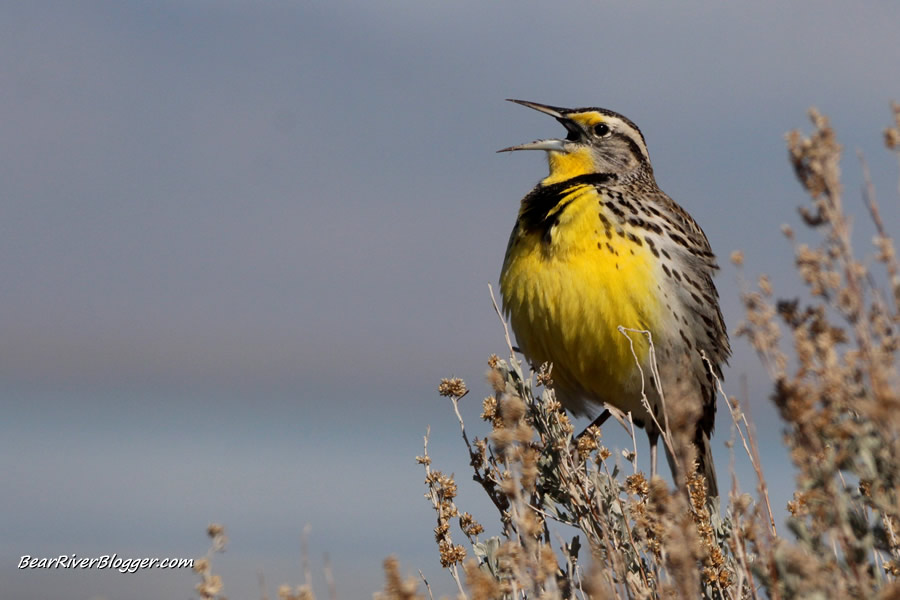
Here in Utah and in much of the western and southwestern portions of the United States, the ground foraging western meadowlark is a year-round resident, one that doesn’t migrate much but mostly moves around locally during winter to find waste grains and weed seeds in spent agricultural fields and roadsides when it’s too cold to feed upon a bounty of insects such as beetles, grasshoppers, spiders, and crickets during the summer.
For breeding, the western meadowlark nests on the ground with the female meadowlark choosing the nest site, gravitating towards a small, shallow depression of sorts already in the ground.
The female meadowlark shapes this shallow depression with her bill into a more suitable nesting site and then lines it with soft grasses.
Although very vocal during spring and summertime, the western meadowlark is quiet during winter, rarely to never singing as its song is mainly to defend the pairs nesting territory and to attract a mate, things not needed during wintertime.
This is why when you hear a western meadowlark singing, you can bet your bottom dollar spring is just a stone’s throw away.
Although I do occasionally see a few meadowlarks here and there on the drier upland habitats in wetlands such as Farmington Bay and the Bear River Migratory Bird Refuge auto tour route, the western meadowlark prefers to live in open ranges more along the lines of grasslands and grassland-like areas.

Antelope Island, where all the pictures and video for this blog post were gathered yesterday, in fact, is one of the best local places in northern Utah to go bird watching for as well as photograph the western meadowlark, where they can be seen and heard singing over the entire island during spring and summer.
Another spot I personally find western meadowlarks is on the upper portion of Forest Street on the Bear River Migratory Bird Refuge where it cuts through large swaths of open range.
Numerous fences and signposts along Forest Street offer a bounty of roadside platforms for the meadowlark to perch upon and sing.
My favorite place, however, to find the singing western meadowlark is located in the far reaches of Box Elder County on Promontory Mountain out by the Golden Spike National Historical Park.
The reason for this is twofold, one being the old wooden roadside fence posts that make for great rustic perches for photographing the meadowlark as it sings.
The other reason for this is that location in particular is also a great place to find and photograph the burrowing owl at the same time, at the same place, and even on the same rustic old fence posts.
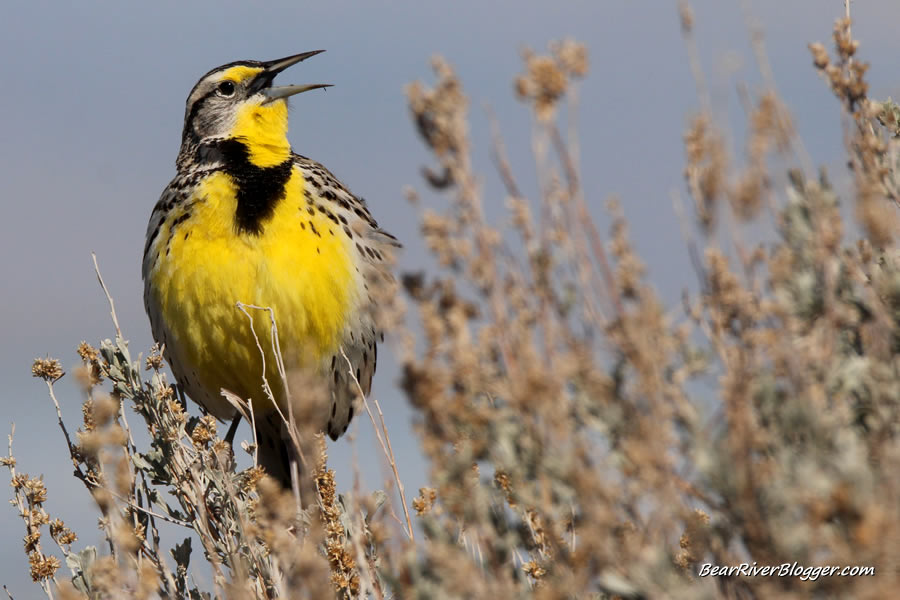
And as an added bonus for bird watchers and photographers, in good years, short-eared owls can also be seen in the same summertime locations, although the past few summers these particular owls have been in short supply and quite hard to come by on Promontory Mountain and other places I frequent.
So with the onset of spring just around the corner, my advice would be to any and all bird watchers reading this, head out somewhere western meadowlarks can be found in your neck of the woods and enjoy their sweet, soothing, and melodic song while you can.
Western Meadowlark T-shirt, available in a variety of colors and styles. Visit our online store for more information or to make a purchase, and use coupon code save20 for 20% off all our products for a limited time.

If you are a bird watcher like I am, don’t forget to head on over to our subscribe page and sign up for email notification for future blog posts as well as share our site with your birding friends.
We also have a small but growing YouTube channel we occasionally post updates about the Bear River Migratory Bird Refuge as well as short nature clips when we can capture them with our camera.

